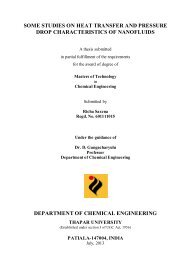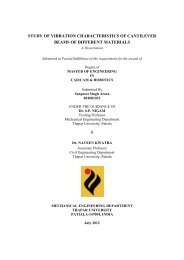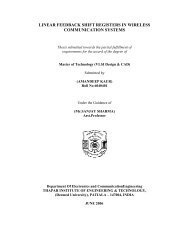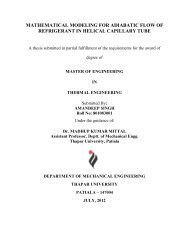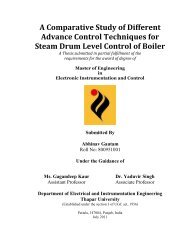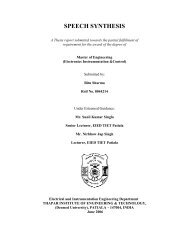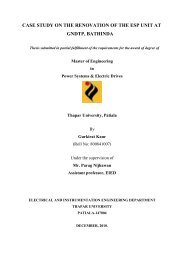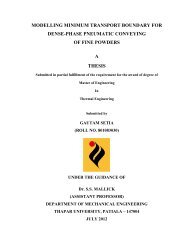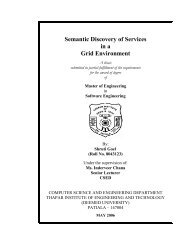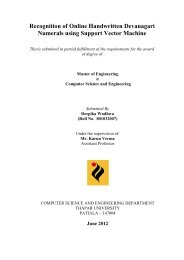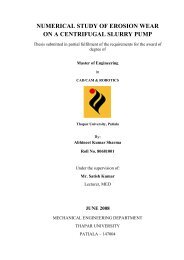from indigenous fermented foods and human gut ... - Thapar University
from indigenous fermented foods and human gut ... - Thapar University
from indigenous fermented foods and human gut ... - Thapar University
You also want an ePaper? Increase the reach of your titles
YUMPU automatically turns print PDFs into web optimized ePapers that Google loves.
4.7.4 Antagonistic activity against pathogens<br />
95<br />
Chapter IV: Results<br />
In the agar spot test, the indicator strains, S. aureus ATCC 9144, A. hydrophila<br />
ATCC 35654, Y. enterolitica ATCC 9610, E. sakazakii ATCC 51329, S. flexneri 2a, S.<br />
typhimurium ATCC 19585, L. monocytogenes ATCC 1911, E. coli 0157:H7, L.<br />
acidophilus ATCC 4356 <strong>and</strong> L. plantarum ATCC 8014 showed weak to strong inhibition<br />
(zone of inhibition of more than 1 mm <strong>from</strong> edge of producer colony up to 23 mm) as<br />
listed in Table 4.16. L. acidophilus ATCC 4356 was not inhibited at all by five of the<br />
lactobacillus strains tested but weakly inhibited by L. fermentum Lamec-29 strain. The<br />
indicator strains belonging to the Lactobacillus genus were weakly or not inhibited<br />
(inhibition zone of less than 2 mm) except in the case of L. monocytogenes ATCC 1911,<br />
where as the maximum inhibition was observed in the case of E. sakazakii ATCC 51329<br />
by L. fermentum Lamec-29.<br />
The inhibitory activity was not due to bacteriocin production, as neutralised, cell-free<br />
supernatant of the producer culture did not exhibit any antimicrobial activity when<br />
compared to the effect of live cells in the agar spot test. Therefore, the inhibitory activity<br />
observed probably depended on production <strong>and</strong> diffusion of organic acids into the medium.<br />
Hydrogen peroxide could hypothetically also act as an inhibitory substance, but the<br />
incubation of the plates under anaerobic conditions overrules this as a possible cause for<br />
the observed inhibition. Production of H 2O 2 under aerobic conditions was also investigated<br />
<strong>and</strong> it was observed that two of the L. delbrueckii strains tested (LKH-2 <strong>and</strong> LKH-3) <strong>and</strong><br />
one strain of L. helveticus (LKH-5) were able to produce H 2O 2 (Table 4.17)



